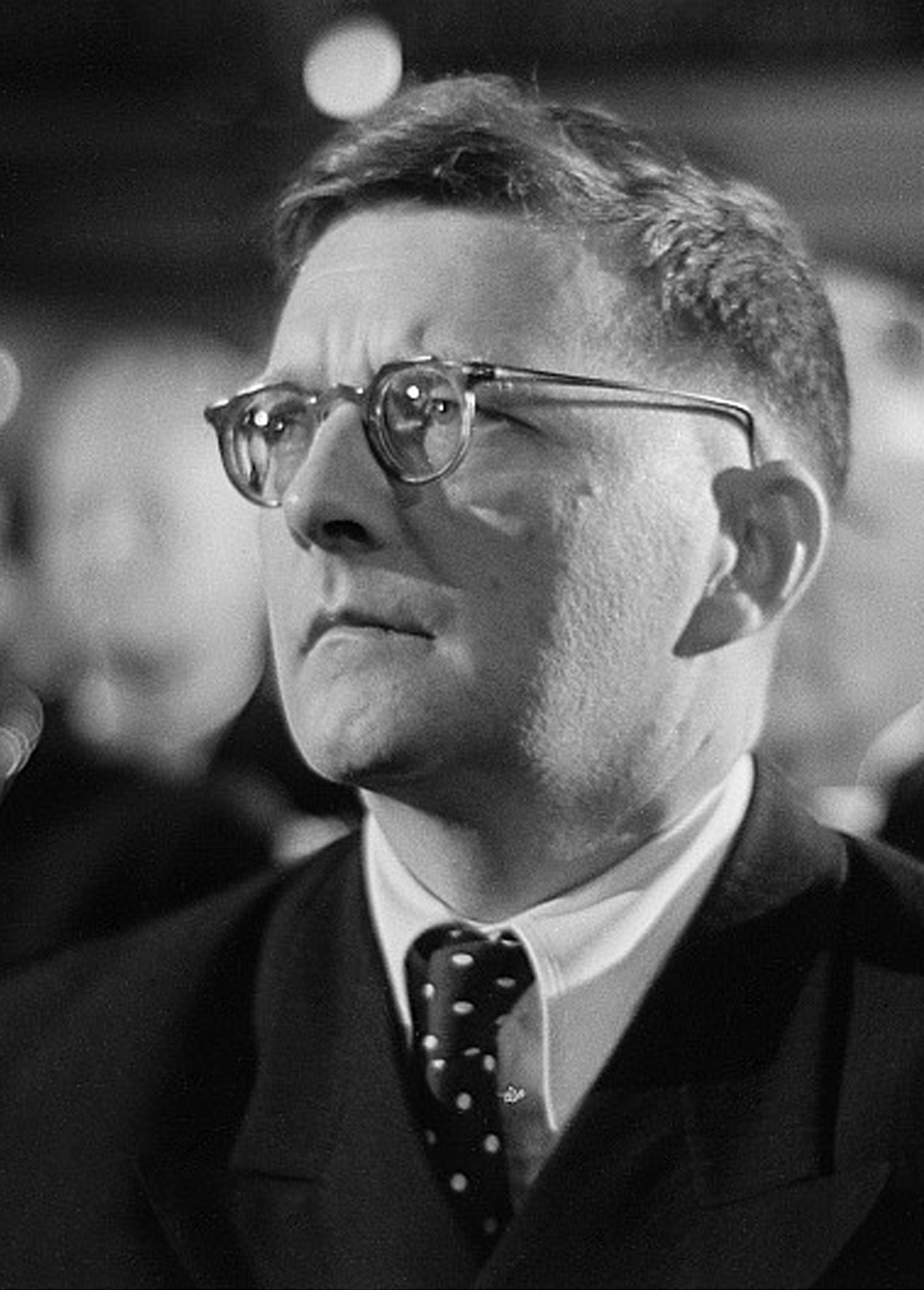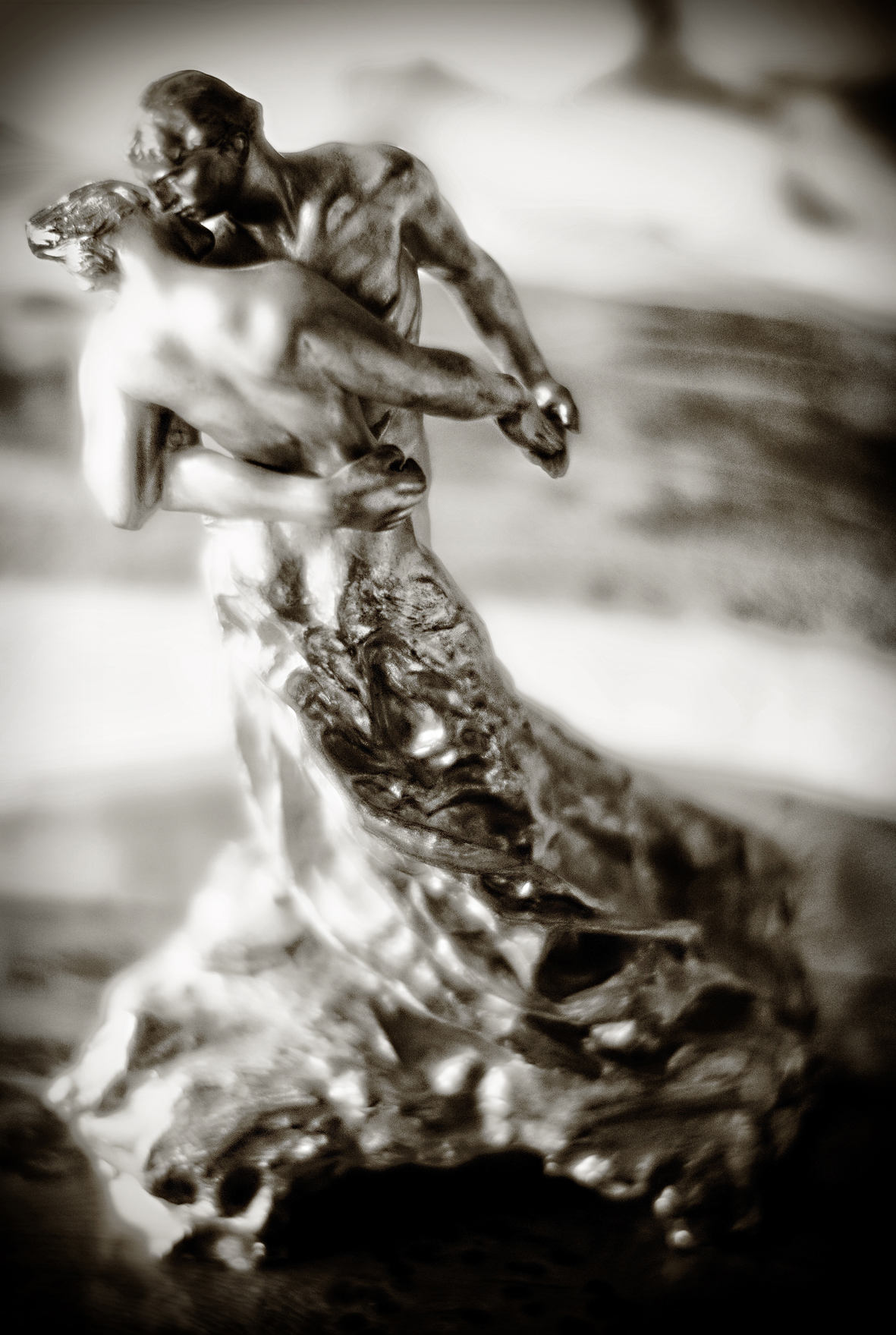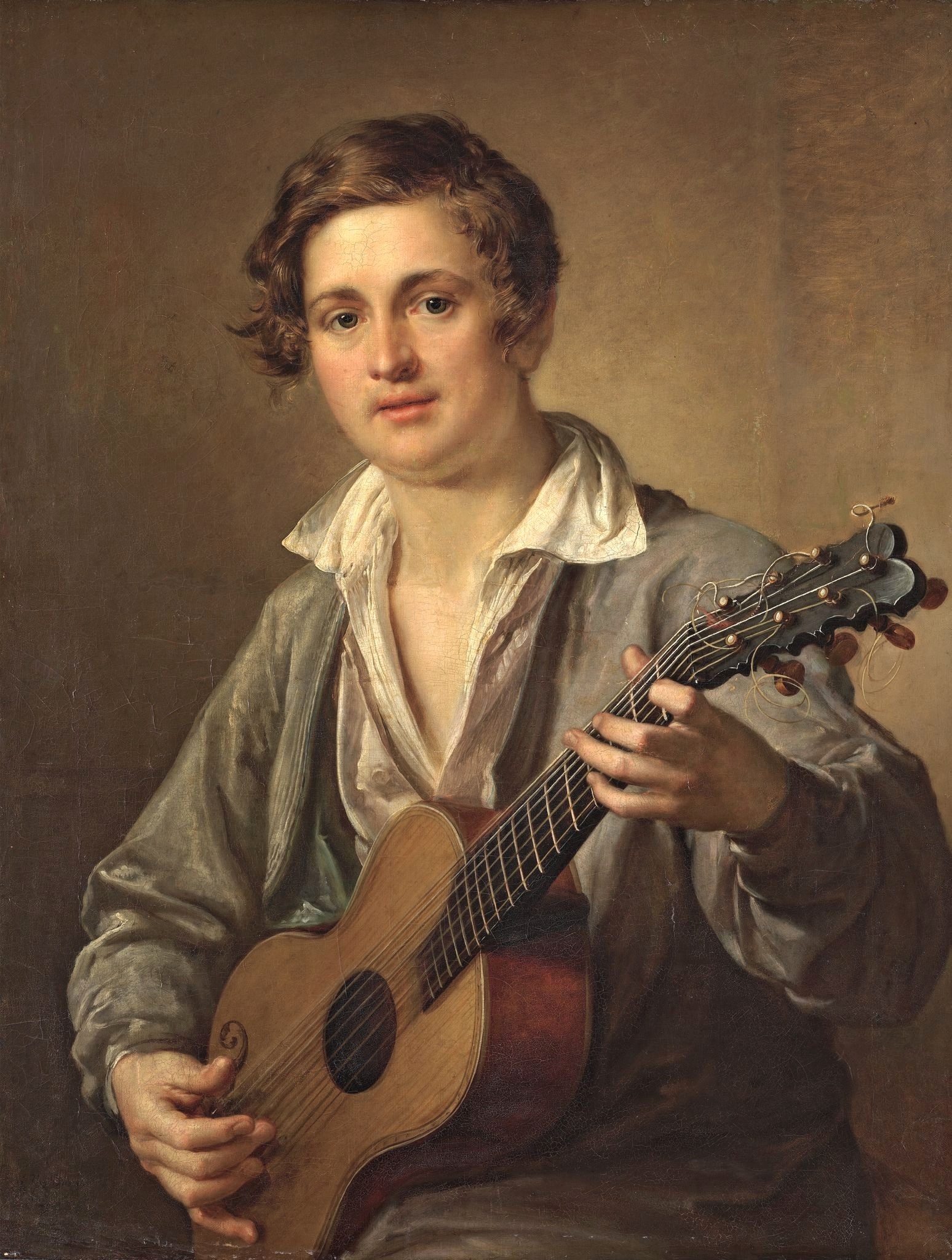|
String Quartet No. 2 (Shostakovich)
Dmitri Shostakovich's String Quartet No. 2 in A major, Opus number, Op. 68, was composed in 1944 in music, 1944 in just nineteen days in Ivanovo, 300 kilometres north-east of Moscow. It was premiered by the Beethoven Quartet and is dedicated to the composer Vissarion Shebalin. When Shostakovich began writing his Second String Quartet he had already completed eight of his fifteen symphonies. He was also half-way through his life. Another thirteen quartets remained to be composed, however, and they would come in rapid succession. Structure The work has four Movement (music), movements: Playing time is approximately 35 minutes, one minute shorter than his longest, String Quartet No. 15 (Shostakovich), String Quartet No. 15. The overture that the work begins with is in sonata form, traditional for the first movement of such a work. The music is strong, forceful, and animated. This strong tone is subdued by the lyrical, wandering mood of the recitative. The first violin leads a ... [...More Info...] [...Related Items...] OR: [Wikipedia] [Google] [Baidu] |
Dmitri Shostakovich
Dmitri Dmitriyevich Shostakovich, , group=n (9 August 1975) was a Soviet-era Russian composer and pianist who became internationally known after the premiere of his First Symphony in 1926 and was regarded throughout his life as a major composer. Shostakovich achieved early fame in the Soviet Union, but had a complex relationship with its government. His 1934 opera '' Lady Macbeth of Mtsensk'' was initially a success, but eventually was condemned by the Soviet government, putting his career at risk. In 1948 his work was denounced under the Zhdanov Doctrine, with professional consequences lasting several years. Even after his censure was rescinded in 1956, performances of his music were occasionally subject to state interventions, as with his Thirteenth Symphony (1962). Shostakovich was a member of the Supreme Soviet of the RSFSR (1947) and the Supreme Soviet of the Soviet Union (from 1962 until his death), as well as chairman of the RSFSR Union of Composers (1960–19 ... [...More Info...] [...Related Items...] OR: [Wikipedia] [Google] [Baidu] |
Recitative
Recitative (, also known by its Italian name "''recitativo''" ()) is a style of delivery (much used in operas, oratorios, and cantatas) in which a singer is allowed to adopt the rhythms and delivery of ordinary speech. Recitative does not repeat lines as formally composed songs do. It resembles sung ordinary speech more than a formal musical composition. Recitative can be distinguished on a continuum from more speech-like to more musically sung, with more sustained melodic lines. The mostly syllabic ''recitativo secco'' ("dry", accompanied only by continuo, typically cello and harpsichord) is at one end of the spectrum, through ''recitativo accompagnato'' (using orchestra), the more melismatic arioso, and finally the full-blown aria or ensemble, where the pulse is entirely governed by the music. Secco recitatives can be more improvisatory and free for the singer, since the accompaniment is so sparse; in contrast, when recitative is accompanied by orchestra, the singer must p ... [...More Info...] [...Related Items...] OR: [Wikipedia] [Google] [Baidu] |
String Quartets By Dmitri Shostakovich
String or strings may refer to: *String (structure), a long flexible structure made from threads twisted together, which is used to tie, bind, or hang other objects Arts, entertainment, and media Films * ''Strings'' (1991 film), a Canadian animated short * ''Strings'' (2004 film), a film directed by Anders Rønnow Klarlund * ''Strings'' (2011 film), an American dramatic thriller film * ''Strings'' (2012 film), a British film by Rob Savage * '' Bravetown'' (2015 film), an American drama film originally titled ''Strings'' * '' The String'' (2009), a French film Music Instruments * String (music), the flexible element that produces vibrations and sound in string instruments * String instrument, a musical instrument that produces sound through vibrating strings ** List of string instruments * String piano, a pianistic extended technique in which sound is produced by direct manipulation of the strings, rather than striking the piano's keys Types of groups * String band, musical ... [...More Info...] [...Related Items...] OR: [Wikipedia] [Google] [Baidu] |
List Of Major/minor Compositions
Major/minor compositions are musical compositions that begin in a major key and end in a minor key (generally the parallel minor), specifying the keynote (as C major/minor). This is a very unusual form in tonal music, although examples became more common in the nineteenth century. There are far fewer major/minor compositions than minor/major ones (the latter category of which includes, but is not limited to, all minor-key works that end with a Picardy third, as well as many Classical- and Romantic-period symphonies, concertos, sonatas and chamber works, and individual movements thereof.) The major/minor compositions in the following lists do not necessarily end with a minor chord; a final passage in minor ending with a sonority that fails to re-establish the major mode (for example, an open octave or fifth) is sufficient. Works falling into the following categories are excluded: * Compositions that would be major/minor but for a final Picardy third stipulated by the composer, ... [...More Info...] [...Related Items...] OR: [Wikipedia] [Google] [Baidu] |
Sonata Form
Sonata form (also ''sonata-allegro form'' or ''first movement form'') is a musical structure generally consisting of three main sections: an exposition, a development, and a recapitulation. It has been used widely since the middle of the 18th century (the early Classical period). While it is typically used in the first movement of multi-movement pieces, it is sometimes used in subsequent movements as well—particularly the final movement. The teaching of sonata form in music theory rests on a standard definition and a series of hypotheses about the underlying reasons for the durability and variety of the form—a definition that arose in the second quarter of the 19th century. There is little disagreement that on the largest level, the form consists of three main sections: an exposition, a development, and a recapitulation; however, beneath this general structure, sonata form is difficult to pin down to a single model. The standard definition focuses on the thematic and harm ... [...More Info...] [...Related Items...] OR: [Wikipedia] [Google] [Baidu] |
String Quartet No
String or strings may refer to: * String (structure), a long flexible structure made from threads twisted together, which is used to tie, bind, or hang other objects Arts, entertainment, and media Films * ''Strings'' (1991 film), a Canadian animated short * ''Strings'' (2004 film), a film directed by Anders Rønnow Klarlund * ''Strings'' (2011 film), an American dramatic thriller film * ''Strings'' (2012 film), a British film by Rob Savage * '' Bravetown'' (2015 film), an American drama film originally titled ''Strings'' * '' The String'' (2009), a French film Music Instruments * String (music), the flexible element that produces vibrations and sound in string instruments * String instrument, a musical instrument that produces sound through vibrating strings ** List of string instruments * String piano, a pianistic extended technique in which sound is produced by direct manipulation of the strings, rather than striking the piano's keys Types of groups * String band, musi ... [...More Info...] [...Related Items...] OR: [Wikipedia] [Google] [Baidu] |
Variation (music)
In music, variation is a formal technique where material is repeated in an altered form. The changes may involve melody, rhythm, harmony, counterpoint, timbre, orchestration or any combination of these. Variation techniques Mozart's Twelve Variations on "Ah vous dirai-je, Maman" (1785), known in the English-speaking world as " Twinkle, Twinkle, Little Star" exemplifies a number of common variation techniques. Here are the first eight bars of the theme: Melodic variation Mozart's first variation decorates and elaborates the plain melodic line: Rhythmic variation The fifth variation breaks up the steady pulse and creates syncopated off-beats: Harmonic variation The seventh variation introduces powerful new chords, which replace the simple harmonies originally implied by the theme with a prolongational series of descending fifths: Minor mode In the elaborate eighth variation, Mozart changes from the major to the parallel minor mode, while combining three techniques: count ... [...More Info...] [...Related Items...] OR: [Wikipedia] [Google] [Baidu] |
Waltz
The waltz ( ), meaning "to roll or revolve") is a ballroom and folk dance, normally in triple ( time), performed primarily in closed position. History There are many references to a sliding or gliding dance that would evolve into the waltz that date from 16th-century Europe, including the representations of the printmaker Hans Sebald Beham. The French philosopher Michel de Montaigne wrote of a dance he saw in 1580 in Augsburg, where the dancers held each other so closely that their faces touched. Kunz Haas (of approximately the same period) wrote, "Now they are dancing the godless ''Weller'' or ''Spinner''."Nettl, Paul. "Birth of the Waltz." In ''Dance Index'' vol 5, no. 9. 1946 New York: Dance Index-Ballet Caravan, Inc. pages 208, 211 "The vigorous peasant dancer, following an instinctive knowledge of the weight of fall, uses his surplus energy to press all his strength into the proper beat of the bar, thus intensifying his personal enjoyment in dancing." Around 1750, ... [...More Info...] [...Related Items...] OR: [Wikipedia] [Google] [Baidu] |
Romance (music)
The term romance ( es, romance/romanza, it, romanza, german: Romanze, french: romance, russian: романс, pt, romance, ro, romanţă) has a centuries-long history. Applied to narrative ballads in Spain, it came to be used by the 18th century for simple lyrical pieces not only for voice, but also for instruments alone. The ''Oxford Dictionary of Music'' states that "generally it implies a specially personal or tender quality". Instrumental music bearing the title "Romance" Typically, a Classical piece or movement called a "Romance" is in three, meaning three beats in the bar * Beethoven: two violin romances (''Romanzen'') for violin and orchestra, No. 1 G major, Op. 40; No. 2 in F major, Op. 50 take the form of a loose theme and variations * Johannes Brahms: ''Romanze'' in F major for piano, Op. 118, No. 5 (1893) * Max Bruch: "Romance for Viola and Orchestra in F" * Arthur Butterworth: Romanza for horn and string quartet with double bass ad libitum (or piano), Op. 12 ... [...More Info...] [...Related Items...] OR: [Wikipedia] [Google] [Baidu] |
Tempo
In musical terminology, tempo ( Italian, 'time'; plural ''tempos'', or ''tempi'' from the Italian plural) is the speed or pace of a given piece. In classical music, tempo is typically indicated with an instruction at the start of a piece (often using conventional Italian terms) and is usually measured in beats per minute The minute is a unit of time usually equal to (the first sexagesimal fraction) of an hour, or 60 seconds. In the UTC time standard, a minute on rare occasions has 61 seconds, a consequence of leap seconds (there is a provision to insert a nega ... (or bpm). In modern classical compositions, a " metronome mark" in beats per minute may supplement or replace the normal tempo marking, while in modern genres like electronic dance music, tempo will typically simply be stated in BPM. Tempo may be separated from articulation and meter (music), meter, or these aspects may be indicated along with tempo, all contributing to the overall texture (music), texture. W ... [...More Info...] [...Related Items...] OR: [Wikipedia] [Google] [Baidu] |
A Major
A major (or the key of A) is a major scale based on A, with the pitches A, B, C, D, E, F, and G. Its key signature has three sharps. Its relative minor is F-sharp minor and its parallel minor is A minor. The key of A major is the only key where the Neapolitan sixth chord on (''i.e.'' the flattened supertonic) requires both a flat and a natural accidental. The A major scale is: : In the treble, alto, and bass clefs, the G in the key signature is placed higher than C. However, in the tenor clef, it would require a ledger line and so G is placed lower than C. History Although not as rare in the symphonic literature as sharper keys (those containing more than three sharps), symphonies in A major are less common than in keys with fewer sharps such as D major or G major. Beethoven's Symphony No. 7, Bruckner's Symphony No. 6 and Mendelssohn's Symphony No. 4 comprise a nearly complete list of symphonies in this key in the Romantic era. Mozart's Clarine ... [...More Info...] [...Related Items...] OR: [Wikipedia] [Google] [Baidu] |
Overture
Overture (from French ''ouverture'', "opening") in music was originally the instrumental introduction to a ballet, opera, or oratorio in the 17th century. During the early Romantic era, composers such as Beethoven and Mendelssohn composed overtures which were independent, self-existing instrumental, programmatic works that foreshadowed genres such as the symphonic poem. These were "at first undoubtedly intended to be played at the head of a programme". History 17th century The idea of an instrumental opening to opera existed during the 17th century. Peri's ''Euridice'' opens with a brief instrumental ritornello, and Monteverdi's '' L'Orfeo'' (1607) opens with a toccata, in this case a fanfare for muted trumpets. More important, however, was the prologue, which comprised sung dialogue between allegorical characters which introduced the overarching themes of the stories depicted. French overture As a musical form, however, the French overture first appears in the court ... [...More Info...] [...Related Items...] OR: [Wikipedia] [Google] [Baidu] |





.jpg)